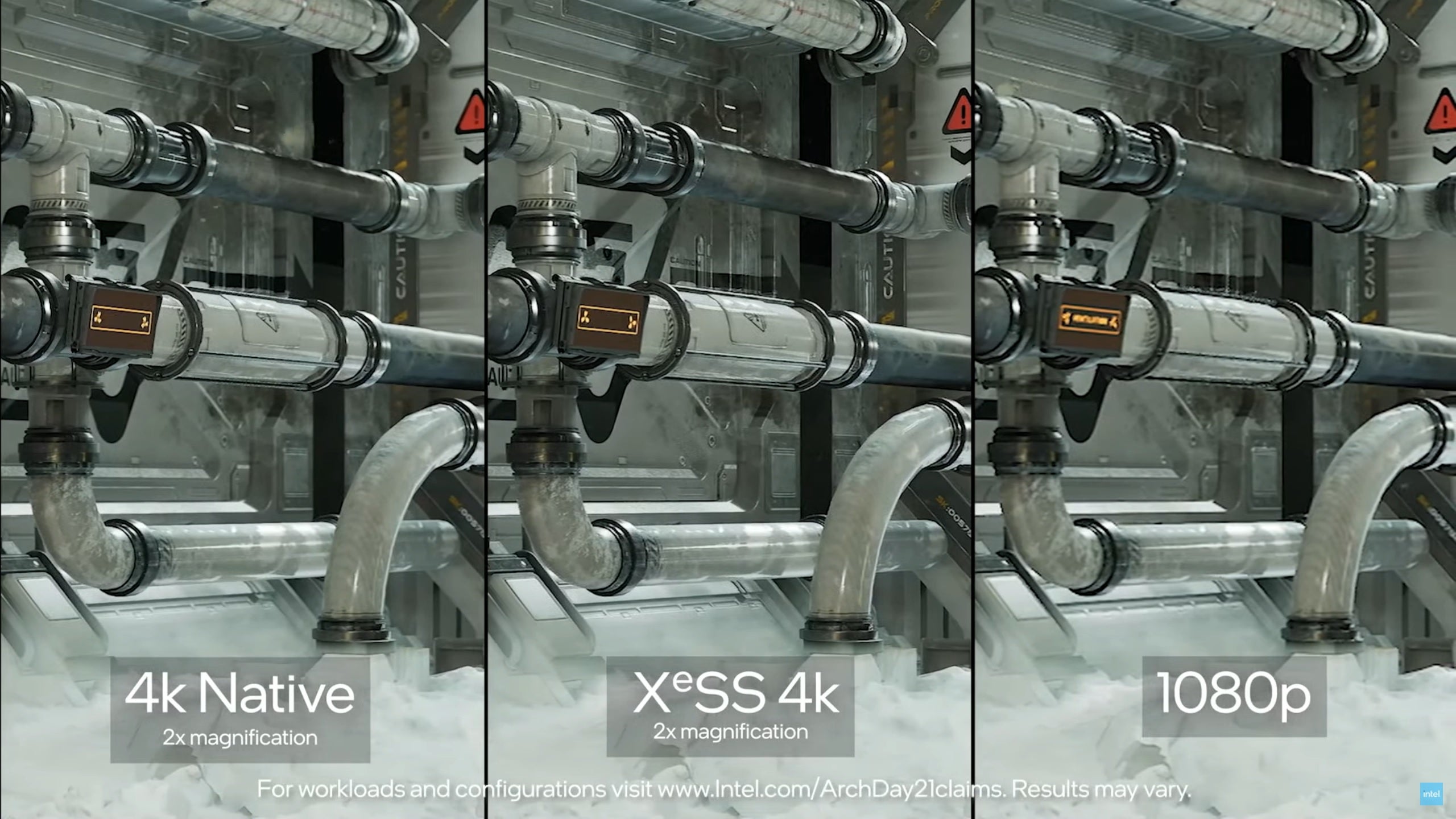The news came as part of the thrillingly-named Architecture Day, which began with a video of Intel senior vice president Raja Koduri shrinking down and running around inside an Arc chip like a 2021 reboot of the The Borrowers. In fairness, Intel probably felt they needed something to top Nvidia’s CGI executive. First, the hardware. I’ll warn you now that Intel didn’t go into actual specs, and certainly not any performance benchmarks, but did commit to a roadmap of at least four generations of gaming GPUs. The first of these, codenamed Alchemist, is set for launch in Q1 2022, and will be based on the first-gen Xe HPG (High Performance Gaming) architecture. Not unlike how AMD is moving up through versions of its RDNA architecture, future Intel GPUs will apparently iterate on Xe HPG. That means the following GPU families, codenamed Battlemage and Celestial, will be based on the Xe2 HPG AND Xe3 HPG architectures respectively. Intel also announced an even further-off GPU gen named Druid, which will use a more comprehensively upgraded “Xe Next architecture”, though rough dates for anything beyond Alchemist were a no-show. Still, Alchemist (Arc Alchemist?) already seems to come with all the trimmings you’d expect from a modern GPU series. That includes “ray-tracing units” that, like the RT cores on Nvidia’s GeForce RTX cards, can handle the added brain strain of simulating pretty real-time lightning effects on both DirectX and Vulkan. Xe HPG also matches AMD’s use of a teeny-tiny 7nm manufacturing process, which could – emphasis on the hypothetical – help with power efficiency. While we’ll have to wait a few months to see how all this tech translates into real-world performance, the prospect of a full-fat Intel graphics card remains an interesting one. And even if Alchemist-based cards join Nvidia and AMD models in stockless purgatory, you won’t actually need an Intel GPU to take advantage of Architecture Day’s other big gaming highlight: XeSS. This is Intel’s answer to Nvidia DLSS (Deep Learning Super Sampling) and AMD FSR (FidelityFX Super Resolution): a form of anti-aliasing trickery that aims to smooth out edges without the usual performance hit. Xe HPG GPUs will support it, obviously, but it will apparently work on Nvidia and AMD cards too. For the unfamiliar, all three systems work by rendering images at a lower resolution than your monitor’s native res, then upscaling the image. FSR will still apply conventional anti-aliasing, but DLSS and now XeSS will use a much less horsepower-hungry upscaling algorithm to make everything look about as sharp as it normally would. Just without the GPU strain of native-res TAA, MSAA or FXAA. There are other significant differences between how exactly DLSS and FSR apply upscaling, and it sounds like XeSS lands in the middle of the two approaches. Specially, Intel’s tech works by reconstructing pixel details from “motion-compensated previous frames”, as well as surrounding pixels on the frame itself. This sounds close to how DLSS pieces together a scene, again with a combination of data from previous images and some AI-aided analysis of how the in-game view has moved since the last frame. FSR, meanwhile, is a simple spatial upscaler and sharpening filter combo, which doesn’t draw pixel data from previous frames. In some games, this lack of both data and AI smarts can result in both less detail and lower performance gains than DLSS. XeSS could therefore come closer than FSR at matching DLSS’ best results, as it has a lot more pixel data to play with. Of course, games will need to support XeSS as well as your PC hardware, and while the number of DLSS-compatible games is still only a few dozen it beats the XeSS catalogue’s current confirmed tally of zero. Then again, XeSS also differs from DLSS and FSR in that it will be open-source at launch, which could make it the more popular super-sampling choice among developers. In other words, there’s still an awful lot of wait-and-see about Intel’s graphics tech, but it’s promising enough to be worth keeping an eye on ahead of Alchemist’s 2022 release. Intel are no strangers to graphics in general, even if it is usually of the integrated variety, and if nothing else Xe HPG could provide some long-overdue competition to Nvidia and AMD. Provided you can actually buy one of the damn things, anyway.


